Portrait studio
Dec 27, 2021 14:14:32 #
An all glass room with a glass ceiling is going to cause some issues with lighting, as well as environmental control.
--Bob
--Bob
wabbag wrote:
I’m thinking of adding a 1400 sq.foot all glass 4 season room to my house with 12 foot walls and all glass ceiling to be used as a portrait studio . Can. Anyone advise me if this would be a problem , I’m concerned with reflection problems . I was thinking of using white cloth material to soften and control unwanted light . Any positive or negative feedback would be appreciated . Thank you for any suggestions.
Wabbag
Wabbag
Dec 27, 2021 16:44:20 #
As for a glass ceiling, go to the local greenhouse. They use a liquid they spray on their glass to diffuse and reduce the harsh summer sun so their plants won't get burnt. As suggested by another hogger, a large north facing window is a great option. But if a quick fix is needed, use "hairspray" in applications to suit you lighting needs.
Dec 27, 2021 17:38:35 #
wabbag
Loc: New Boston ,MI.
No 42 feet wide with a 21 foot radius
A = pi x radius squared divided by two
Actually 692.37 sq. Feet I was in error with 1400 I forgot to divide by two. It will be half of the full circle . It will be all glass with 12 foot high walls and 22.5 feet to the peak . I am concerned with reflection during day time use .
A = pi x radius squared divided by two
Actually 692.37 sq. Feet I was in error with 1400 I forgot to divide by two. It will be half of the full circle . It will be all glass with 12 foot high walls and 22.5 feet to the peak . I am concerned with reflection during day time use .
Dec 27, 2021 17:46:02 #
wabbag
Loc: New Boston ,MI.
Thank you for the tip ! It will be built on the back of the house that faces east. That is my only option. I will check for that spray. I plan on using white back drop cloth it’s 10 x 30 feet
Dec 27, 2021 17:58:29 #
It's really an interesting question with a bit of history attached.
Centuries ago there was most definitely daylight skylight "studios" used for portraiture. Many of the early portrait photographers were ARTISTS- painters, watercolorists, etc, who understood the principles of light and shadow in creating dimensionality, modelling and realism of likeness in portraiture. There was not as yet a practical form of artificial lighting for photography so they did build skylight studios. As you can see in the attached images there were quite intricate systems of "gobos", which are baffles and shades that can be adjusted to shape, shade, and make for direction in lighting. You will also notice that the skylight/window light is on one side of the subject areas. Northern SKYlight is preferable and not direct sunlight.
If you were to erect a greenhouse kind of room with light entering from all directions, you would require a complex array of shades, gobos, to GO BETWEEN (that's what gobo stands for) the all over skylight and the subject. The configuration of these gobos world has to be changed as per the time today and weather conditions. All of this wod be necessary, only if you wish to take contr over the light in terms of direction, quality, ratio, contrast, and modelling- all the components of fine portraiture.
If you aspire to use "window light" and you are in control of the architecture and location of the room, go for a window and partial skylights with northern exposure to SKYLIGHT, not direct sunlight, and install enough draperies or baffles to shape the light and act as large "barn-doors". Otherws, you will spend more time blocking unwanted light, diffusing or screaming harsh light instead of concentrating on your subjects in a well-controlled lighting
environment.
Since you will have ample space, what not install a few lights so you can shoot at night, especially on short winter days.
The controlled window light and skylight are great light sources for portraiture, providing you know exactly how to employ them. Many of the light modifiers such as softboxes and certain strip lights are designed to simulate window light. Even in the early days of artificial studio lighting, there were many broad and soft tungsten light units. I can still recall studios using Cooper-Hewitt Studio lights because they simulated the properties of
daylight.
What you may want to research is the concept of SUBTRACTIVE LIGHTING. That is precise shading of omnidirectional light sources to create model and directionality of lighting in the result of you portraiture. Reflect are also in play to add fill and control ratios.
Centuries ago there was most definitely daylight skylight "studios" used for portraiture. Many of the early portrait photographers were ARTISTS- painters, watercolorists, etc, who understood the principles of light and shadow in creating dimensionality, modelling and realism of likeness in portraiture. There was not as yet a practical form of artificial lighting for photography so they did build skylight studios. As you can see in the attached images there were quite intricate systems of "gobos", which are baffles and shades that can be adjusted to shape, shade, and make for direction in lighting. You will also notice that the skylight/window light is on one side of the subject areas. Northern SKYlight is preferable and not direct sunlight.
If you were to erect a greenhouse kind of room with light entering from all directions, you would require a complex array of shades, gobos, to GO BETWEEN (that's what gobo stands for) the all over skylight and the subject. The configuration of these gobos world has to be changed as per the time today and weather conditions. All of this wod be necessary, only if you wish to take contr over the light in terms of direction, quality, ratio, contrast, and modelling- all the components of fine portraiture.
If you aspire to use "window light" and you are in control of the architecture and location of the room, go for a window and partial skylights with northern exposure to SKYLIGHT, not direct sunlight, and install enough draperies or baffles to shape the light and act as large "barn-doors". Otherws, you will spend more time blocking unwanted light, diffusing or screaming harsh light instead of concentrating on your subjects in a well-controlled lighting
environment.
Since you will have ample space, what not install a few lights so you can shoot at night, especially on short winter days.
The controlled window light and skylight are great light sources for portraiture, providing you know exactly how to employ them. Many of the light modifiers such as softboxes and certain strip lights are designed to simulate window light. Even in the early days of artificial studio lighting, there were many broad and soft tungsten light units. I can still recall studios using Cooper-Hewitt Studio lights because they simulated the properties of
daylight.
What you may want to research is the concept of SUBTRACTIVE LIGHTING. That is precise shading of omnidirectional light sources to create model and directionality of lighting in the result of you portraiture. Reflect are also in play to add fill and control ratios.
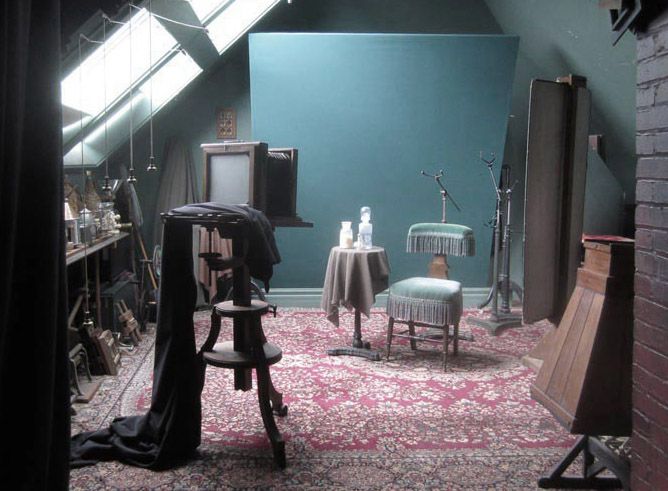
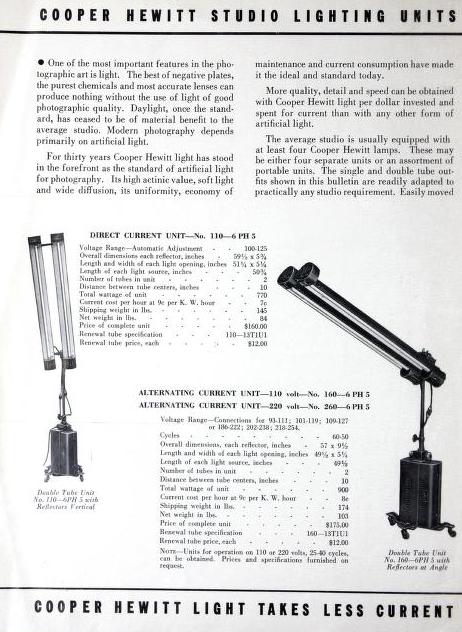
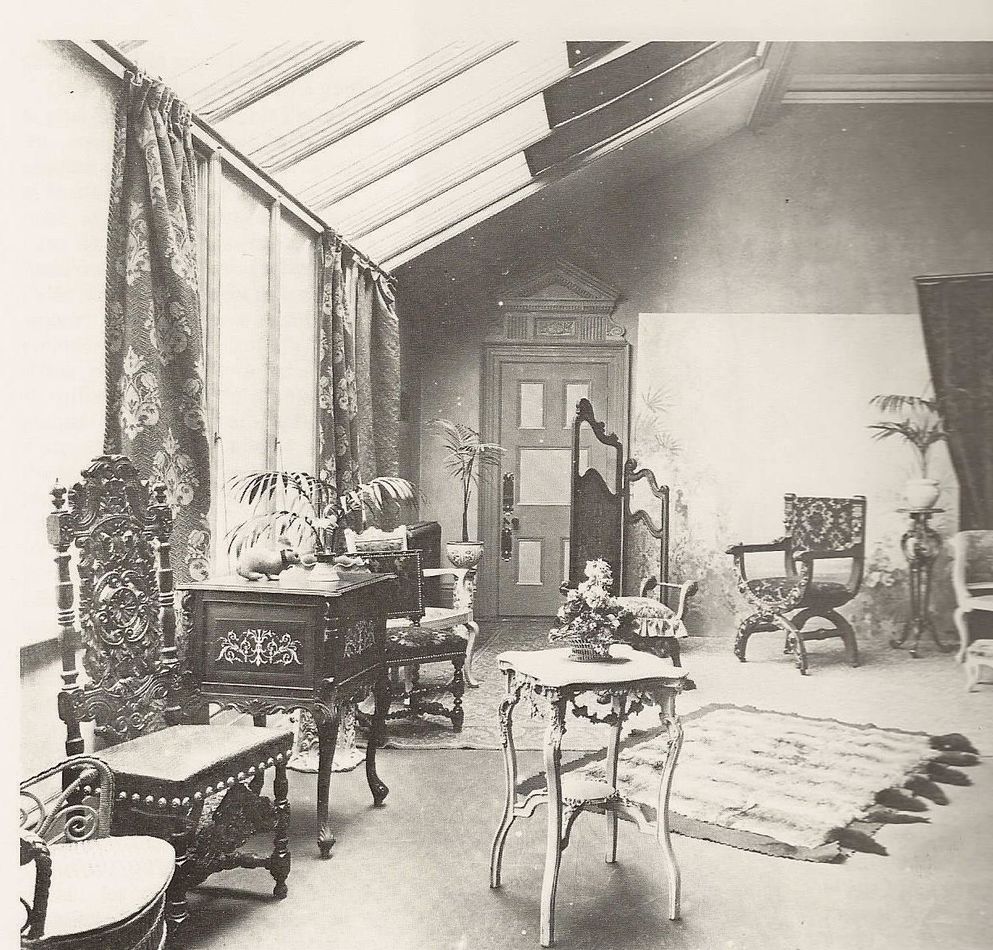
Dec 27, 2021 18:54:21 #
E.L.. Shapiro wrote:
It's really an interesting question with a bit of ... (show quote)
Today with modern tech windows are an anachronism.
Dec 27, 2021 19:15:40 #
Architect1776 wrote:
Today with modern tech windows are an anachronism.
OK! In what respect or context? The windows in and of themselves- have the need to replace my other systems of ventilation and allow natural daylight indoors. Is window light totally outmoded as a practica and viable light source in photography?
Personally, I love window light if or when it is available and common in for from a window with northern exposure. I can simulate it in the studio but in certain circumstances and locations, it can be uniquely applicable and beautiful. It can' always be depended on and it obviously is not available on a 24/7 basis.
Dec 27, 2021 19:21:58 #
wabbag
Loc: New Boston ,MI.
Sorry the room size will be half that size 692.37 sq feet 42wide 21 foot radius. I will be using that space for more than just photos. It will let me leave my cee stands and modifiers set up and store most of my photo equipment in the space . It will be attached to the east side of my house.it will be heated and cooled. I have four muslin back drops 12x24 ‘ to control the light and use for back drops.
Thanks for the input
Thanks for the input
Dec 27, 2021 19:30:04 #
A glass ceiling seems strange? A large north side window is a good idea. Look up information on the old daylight studios and how they control the light with Drapes and diffusers there’s actually a lot of information on this you just have to search for it
Dec 27, 2021 20:55:47 #
Timmers
Loc: San Antonio Texas.
wabbag wrote:
I’m thinking of adding a 1400 sq.foot all glass 4 season room to my house with 12 foot walls and all glass ceiling to be used as a portrait studio . Can. Anyone advise me if this would be a problem , I’m concerned with reflection problems . I was thinking of using white cloth material to soften and control unwanted light . Any positive or negative feedback would be appreciated . Thank you for any suggestions.
Wabbag
Wabbag
This might help. The image you see is of a building in downtown San Antonio Texas. This is the last building on Broadway Street in downtown San Antonio. It is simply referred to as 110 Broadway. The street, Broadway, is to the left side of the image. Note the shadow of the building on the left side.
Now, if you were to go up the street on the left of 110 Broadway about four blocks in the middle of the street you would be standing facing a two story building set on the left side of the street. You would be standing facing that building and it is the oldest existing Daguerreotype studio in the United States. The second floor has widows that are placed to take in the north light from the sky. Daguerreotype studios used all natural light as there was no artificial/electrical lighting at the time.
You may be wondering just exactly how this might be helpful? In San Antonio is a city supported organization called The Conservation Society that has information about the historic buildings that are in San Antonio, literally thousands of these. As luck would have it, that Daguerreotype studio/building is among the holdings of the Conservation Society. The first floor of said building is rented, but the second floor where the actual studio is located has been restored and is maintained in it's original state by the Society. You could contact the san Antonio Conservation Society to get information about the historic building. The Society has a full time, permanent position on city's board who keep records and monitor all the cities buildings.
Up the road in the State Capitol is the University of Texas. The Harry Ransom Center, Humanity Research Center hoses a tremendous resource for early photography (they hold the 'first photograph') and they have images of the design and photographs of north facing photography studios in the collection.
110 Broadway, San Antonio, Texas.
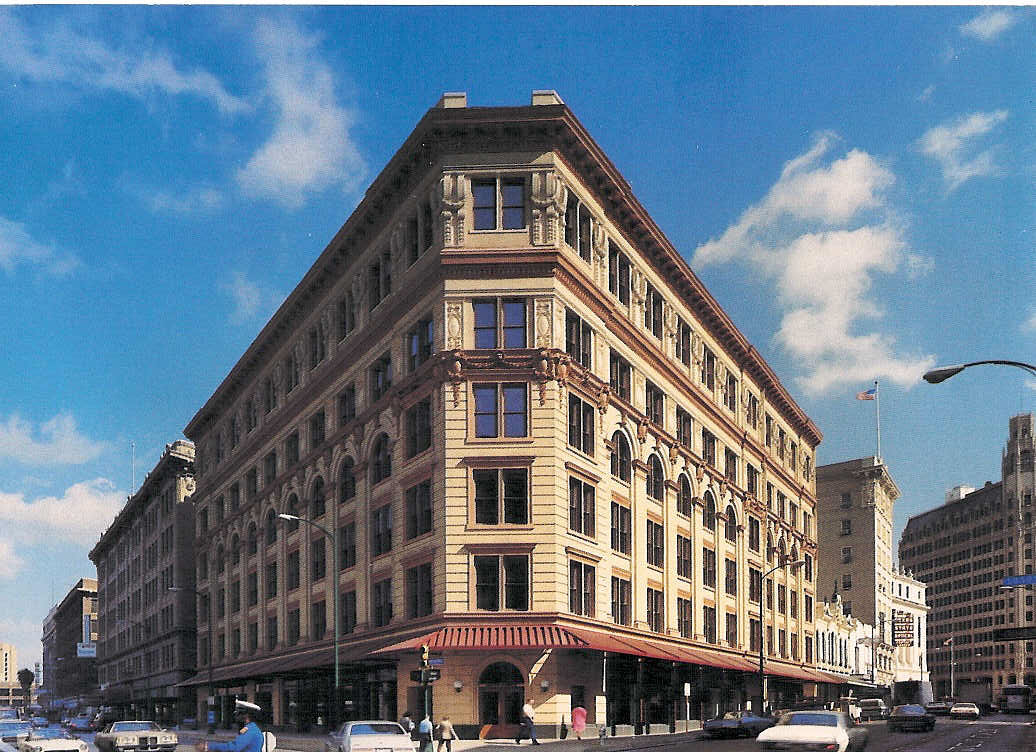
Dec 27, 2021 21:02:15 #
wabbag so far only Robertl594 and Architect1776 have provided what I truly believe is meaningful wisdom here. Since you are a "Retired" Electrician at least you'll be able to provide wiring plan which hopefully meets local code if/when you apply for a building permit.
Bottom Line? Natural light is rarely if ever the primary choice for commercial photography studios....
You need to control every aspect of illumination.... I can see the look on an Art Director's face when you tell them they will have to wait until that cloud passes before you can move forward with the session.
My studio is totally flat black... and I use black velvet sweep behind the talent instead of seamless...
Zero ambient... and 14' ceilings
12 foot ceiling? Nope... 14 feet is a bare minimum. I shoot commercial fashion for designers.
We typically use ballerinas who btw can easily leap 4 to 5 feet vertically... they can be up to six feet tall... so now you have a model crashing into your overhead hair light(s)...
Why are UHH members so afraid of studio lighting? Natural light is for naive novices...
Commercial photographers use studio strobes... or hot lights for video...
Best Advice? Assist commercial shooters in your market...
That was my path... hard work but it's the time tested route into commercial work.
All the best on your epic journey wabbag...
And a wonderful New Year ahead! Cheers! Thomas
Bottom Line? Natural light is rarely if ever the primary choice for commercial photography studios....
You need to control every aspect of illumination.... I can see the look on an Art Director's face when you tell them they will have to wait until that cloud passes before you can move forward with the session.
My studio is totally flat black... and I use black velvet sweep behind the talent instead of seamless...
Zero ambient... and 14' ceilings
12 foot ceiling? Nope... 14 feet is a bare minimum. I shoot commercial fashion for designers.
We typically use ballerinas who btw can easily leap 4 to 5 feet vertically... they can be up to six feet tall... so now you have a model crashing into your overhead hair light(s)...
Why are UHH members so afraid of studio lighting? Natural light is for naive novices...
Commercial photographers use studio strobes... or hot lights for video...
Best Advice? Assist commercial shooters in your market...
That was my path... hard work but it's the time tested route into commercial work.
All the best on your epic journey wabbag...
And a wonderful New Year ahead! Cheers! Thomas
Agency Model (and an accomplished ballerina) airborne and totaly calm & chill at altitude...
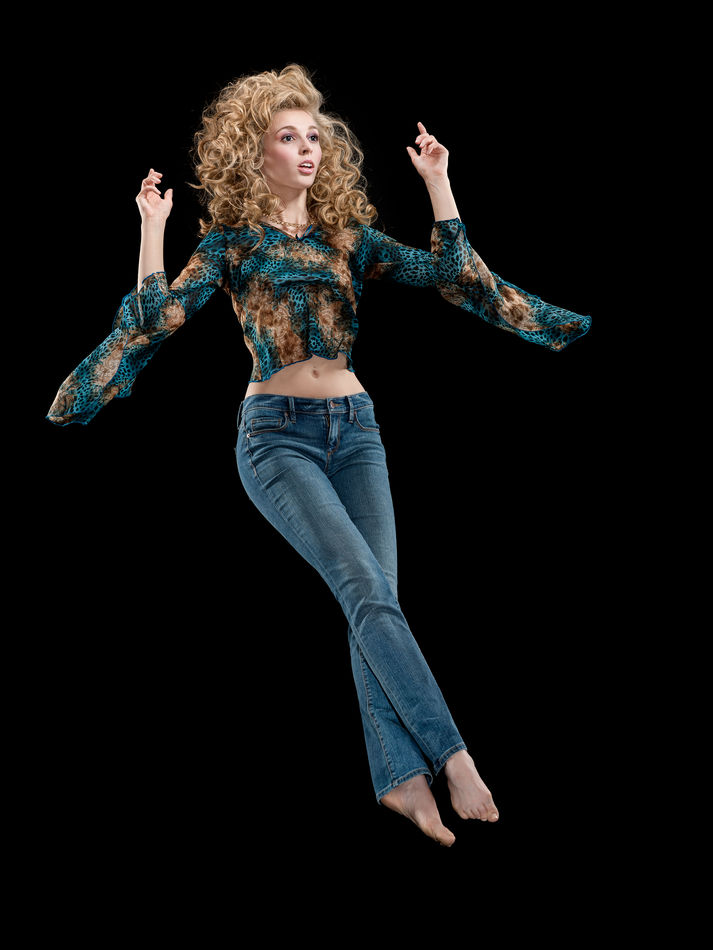
(Download)
Dec 27, 2021 21:19:59 #
bsprague wrote:
With due respect waggag, I wonder how many have added a 1400 foot room for their photography?
My experience might suggest that a room with a single big window on the North side would provide great natural portrait light.
My experience might suggest that a room with a single big window on the North side would provide great natural portrait light.
If the photography doesn't work out, he can use the space as a very brightly lit gymnasium.
Dec 27, 2021 21:53:18 #
wabbag
Loc: New Boston ,MI.
Perhaps you misunderstood my post I’m not a commercial photographer I’m a retired Electrical contractor that has been doing photography as a hobby for about 15 years. I’m not trying to support myself doing photography natural light or any thing else . I only shoot about 60 portraits a year for a fee . I can use the space other purposes but as long as I’m building it I want to make it photography friendly . I’m quite sure I can handle all electrical needs that would pass inspection any where in this country.
Dec 27, 2021 22:00:10 #
Architect1776 wrote:
Today with modern tech windows are an anachronism.
Whether it's photography or some other pursuit, I struggle to understand why so many people are convinced that their way is the only way. It's never true. >Alan
Dec 27, 2021 22:04:33 #
paulrph1 wrote:
the best natural light for portraiture comes from a window on the north side of the building. Side lighting with light reflected back from the other side.
Agreed. It's amazing what you can do with north light and a reflector made out of a white bedsheet.
If you want to reply, then register here. Registration is free and your account is created instantly, so you can post right away.





